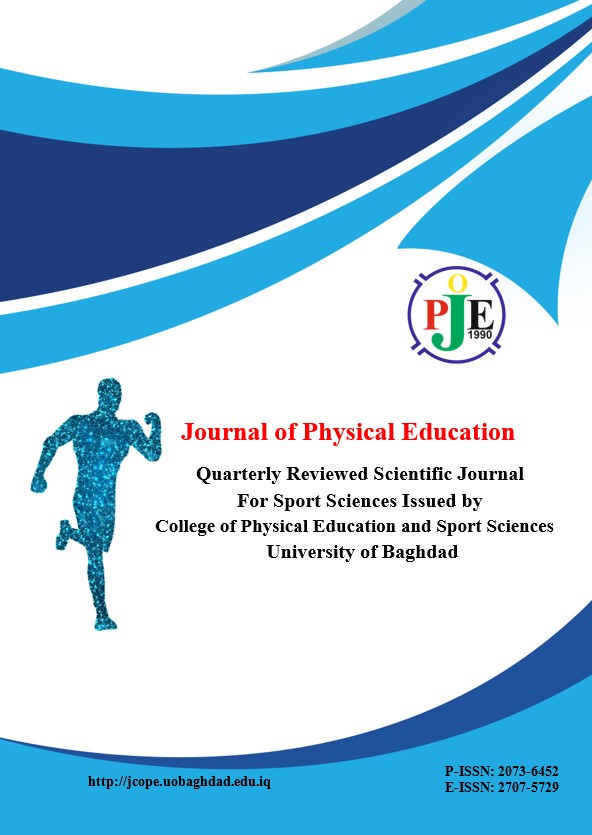صميم بروفايل رياضي وفقاً لبعض المؤشرات الانثروبومترية والتركيب الجسماني وعلاقته بالأداء في الجمناستك الإيقاعي
DOI:
https://doi.org/10.37359/JOPE.V28(1)2016.145الملخص
من خلال متابعة الباحثة للبطولات المحلية وجدت عدم وجود أي نشاط على الصعيد المحلي في السنوات الأخيرة وقلة الاهتمام في رياضة الجمناستك الإيقاعي وعزوف الأندية عن تشكيل فرق نسوية في هذه الرياضة، ومن هنا ارتأت الباحثة الخوض في تفاصيل هذه المشكلة، إذ تمثلت أهداف البحث في التعرف على المؤشرات الانثروبومترية والتركيب الجسماني والأداء في الجمناستك الإيقاعي. وتصميم بروفايل وفقاً لبعض المؤشرات الانثروبومترية والتركيب الجسماني للأداء في الجمناستك الإيقاعي فضلا عن التعرف على العلاقة بين المتغيرات والأداء في الجمناستك الإيقاعي. وافترضت الباحثة هناك علاقة ذات دلالة إحصائية بين المؤشرات الانثروبومترية والتركيب الجسماني والأداء في الجمناستك الإيقاعي. وتمثلت عينة البحث بـ(120) طالبة من طالبات كلية التربية البدنية وعلوم الرياضة للبنات، وشملت قياسات واختبارات البحث قياس الطول وقياس الوزن وقياس الأعراض والمحيطات وقياس BMI، واختبارات المرجحات البندولية في المستوى الأمامي والجانبي والدائرية العكسية والمتقاطعة شكل (8) ومهارة الرمي والاستلام والدحرجات للأداة على الأرض والجسم وجميعها بأداة الطوق، وبعد إجراء التجربة الرئيسة استنتج الباحث إن للمؤشرات الانثروبومترية(الأطوال والمحيطات والأعراض) تأثير في الأداء المهاري لرياضة الجمناستك الإيقاعي، وأن هنالك تباين في المكونات الجسمية(المحيطات، سمك الثنايا الجلدية،BMI) في تأثيرها على الأداء في الجمناستك الإيقاعي.






